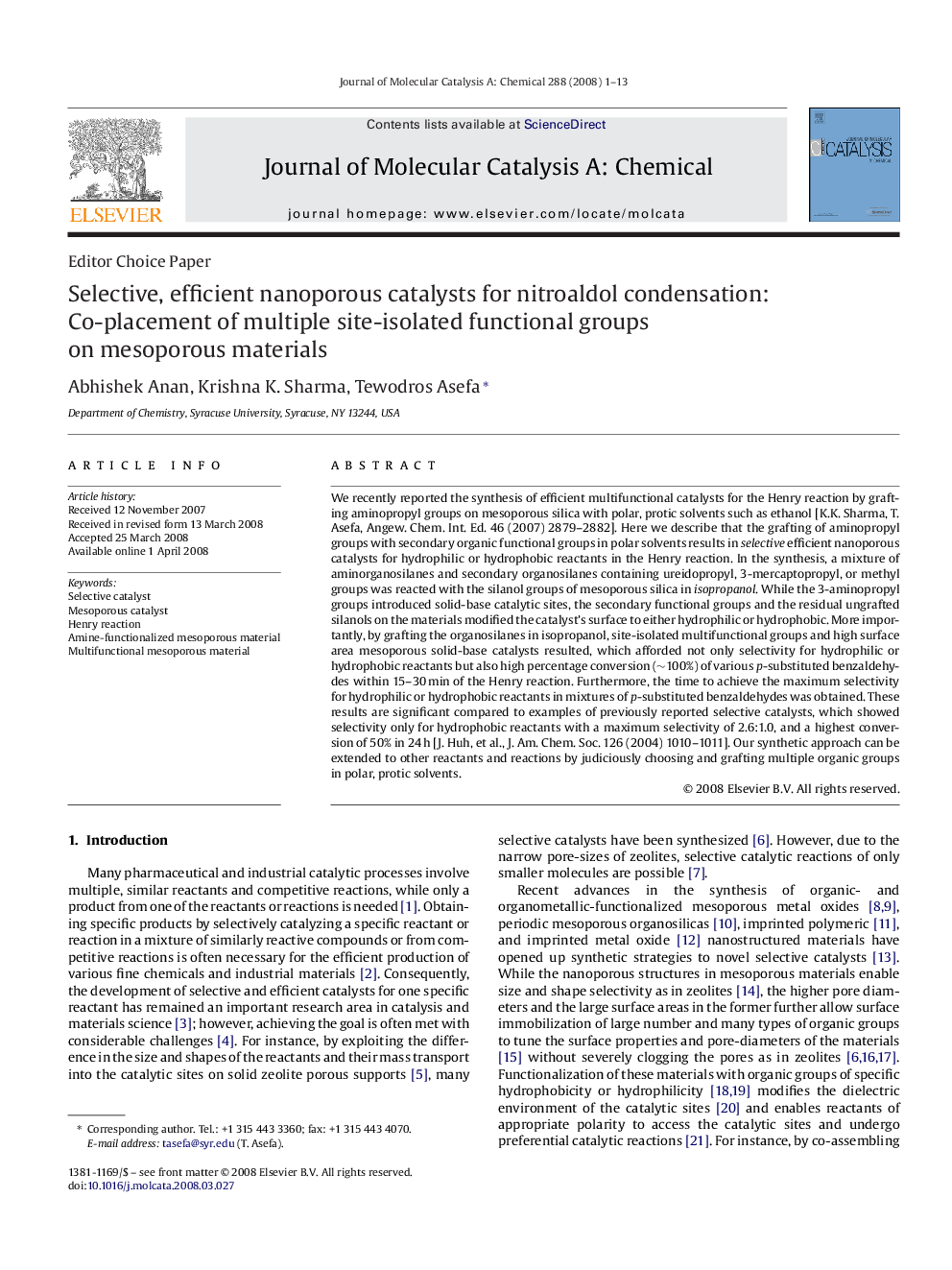| Article ID | Journal | Published Year | Pages | File Type |
|---|---|---|---|---|
| 67266 | Journal of Molecular Catalysis A: Chemical | 2008 | 13 Pages |
We recently reported the synthesis of efficient multifunctional catalysts for the Henry reaction by grafting aminopropyl groups on mesoporous silica with polar, protic solvents such as ethanol [K.K. Sharma, T. Asefa, Angew. Chem. Int. Ed. 46 (2007) 2879–2882]. Here we describe that the grafting of aminopropyl groups with secondary organic functional groups in polar solvents results in selective efficient nanoporous catalysts for hydrophilic or hydrophobic reactants in the Henry reaction. In the synthesis, a mixture of aminorganosilanes and secondary organosilanes containing ureidopropyl, 3-mercaptopropyl, or methyl groups was reacted with the silanol groups of mesoporous silica in isopropanol. While the 3-aminopropyl groups introduced solid-base catalytic sites, the secondary functional groups and the residual ungrafted silanols on the materials modified the catalyst's surface to either hydrophilic or hydrophobic. More importantly, by grafting the organosilanes in isopropanol, site-isolated multifunctional groups and high surface area mesoporous solid-base catalysts resulted, which afforded not only selectivity for hydrophilic or hydrophobic reactants but also high percentage conversion (∼100%) of various p-substituted benzaldehydes within 15–30 min of the Henry reaction. Furthermore, the time to achieve the maximum selectivity for hydrophilic or hydrophobic reactants in mixtures of p-substituted benzaldehydes was obtained. These results are significant compared to examples of previously reported selective catalysts, which showed selectivity only for hydrophobic reactants with a maximum selectivity of 2.6:1.0, and a highest conversion of 50% in 24 h [J. Huh, et al., J. Am. Chem. Soc. 126 (2004) 1010–1011]. Our synthetic approach can be extended to other reactants and reactions by judiciously choosing and grafting multiple organic groups in polar, protic solvents.
Graphical abstractThe synthesis of selective, efficient multifunctional mesoporous catalysts for various p-substituted hydrophilic or hydrophobic reactants in the Henry reaction was demonstrated. Grafting of 3-aminopropyl and 3-mercaptopropyl, methyl or ureidopropyl from a mixture of organosilanes in polar solvents has achieved to introduce solid-base catalytic groups as well as secondary functional groups that can modify the dielectric environment of the pores. As grafting of a mixture of organosilanes in polar solvents resulted in site-isolated catalytic groups, selectivity was accompanied by high percentage conversion in <30 min.Figure optionsDownload full-size imageDownload as PowerPoint slide
